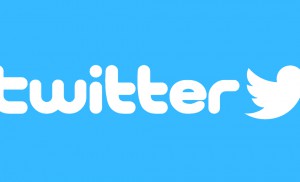When Does the Dollar Store Become the 10 Dollar Store?
The year was 1986. The price $1.00, a chain of stores in the southeast, was founded by three retail veterans who had been inspired by a store called Everything’s A Dollar. However, the latter did not welcome the competition and sued, leading to Only $1.00 changing its name to Dollar Tree, a name that it has had for 35 years. Dollar Tree has been selling toys, home furnishings, kitchenware, holiday decorations, stationary, party supplies, arts and crafts, books, food, and household essentials for $1. It was committed to sticking to that price point even as inflation made it more challenging every year. However, in late 2021, the company announced that it was throwing away the Everything’s $1 signs and walking away from its 35-year brand identity. The plan was to raise prices to $1.25 on the vast majority of its merchandise at all stores by May 2022. The company stated that this was the appropriate time to shift away from the constraints of the $1.00 price point. Retail analysts are divided about the decision and warn that it is a huge gamble for the company. Some say the move was rushed and will alienate loyal customers who shopped there because everything was a dollar. They believe that Dollar General will undercut Dollar Tree by selling more products for $1. Others question whether a company that has struggled even as its discount competitors boomed can effectively execute such a significant strategy change. Dollar Tree has a different model and customer base than other big dollar store chains like Dollar General, Family Dollar, 99 Cents Only, and Canada’s Dollarama. Its approximately 8,000 square-foot stores are typically found in suburban areas and target middle-income shoppers. Dollar Tree attracts shoppers who want to have a little fun and hunt for a quirky gift or items that might look good in their living room for a buck. Selling everything for $1 was also easy on store operations. Workers didn’t have to constantly change price displays in aisles or tags on shelves, and it was simple for customers on tight budgets to keep track as they shopped around. However, the rigid $1 strategy meant that Dollar Tree was more vulnerable to cost increases than competitors who had the ability to pass them off to customers. As inflation increased, it became more challenging for Dollar Tree to maintain profitability.In 1986, Only $1.00, a chain of stores in the southeast, was founded by three retail veterans who had been inspired by a store called Everything’s A Dollar. However, the latter did not welcome the competition and sued, leading to Only $1.00 changing its name to Dollar Tree, a name that it has had for 35 years. Dollar Tree has been selling toys, home furnishings, kitchenware, holiday decorations, stationary, party supplies, arts and crafts, books, food, and household essentials for $1. It was committed to sticking to that price point even as inflation made it more challenging every year. However, in late 2021, the company announced that it was throwing away the Everything’s $1 signs and walking away from its 35-year brand identity. The plan was to raise prices to $1.25 on the vast majority of its merchandise at all stores by May 2022. The company stated that this was the appropriate time to shift away from the constraints of the $1.00 price point. Retail analysts are divided about the decision and warn that it is a huge gamble for the company. Some say the move was rushed and will alienate loyal customers who shopped there because everything was a dollar. They believe that Dollar General will undercut Dollar Tree by selling more products for $1. Others question whether a company that has struggled even as its discount competitors boomed can effectively execute such a significant strategy change. Dollar Tree has a different model and customer base than other big dollar store chains like Dollar General, Family Dollar, 99 Cents Only, and Canada’s Dollarama. Its approximately 8,000 square-foot stores are typically found in suburban areas and target middle-income shoppers. Dollar Tree attracts shoppers who want to have a little fun and hunt for a quirky gift or items that might look good in their living room for a buck. Selling everything for $1 was also easy on store operations. Workers didn’t have to constantly change price displays in aisles or tags on shelves, and it was simple for customers on tight budgets to keep track as they shopped around. However, the rigid $1 strategy meant that Dollar Tree was more vulnerable to cost increases than competitors who had the ability to pass them off to customers. As inflation increased, it became more challenging for Dollar Tree to maintain profitability.
Hey, I’m Matt a financial content writer with a passion for helping people improve their financial well-being. I have 15 years of experience writing on topics such as personal finance, investing, budgeting, and more. Thank you for reading my work, and I hope it helps you on your journey towards financial success. Learn more about me at MattHagens.com


